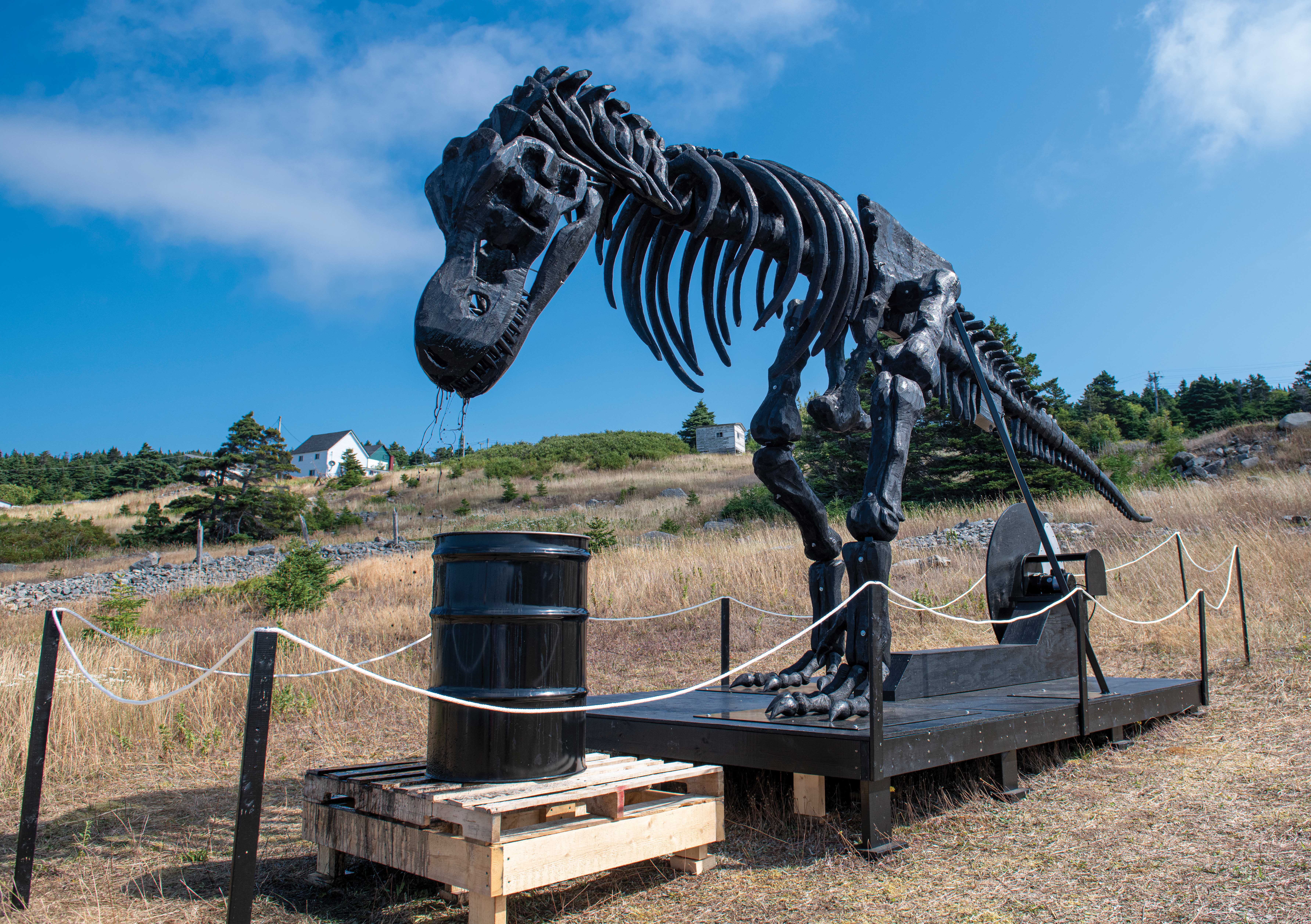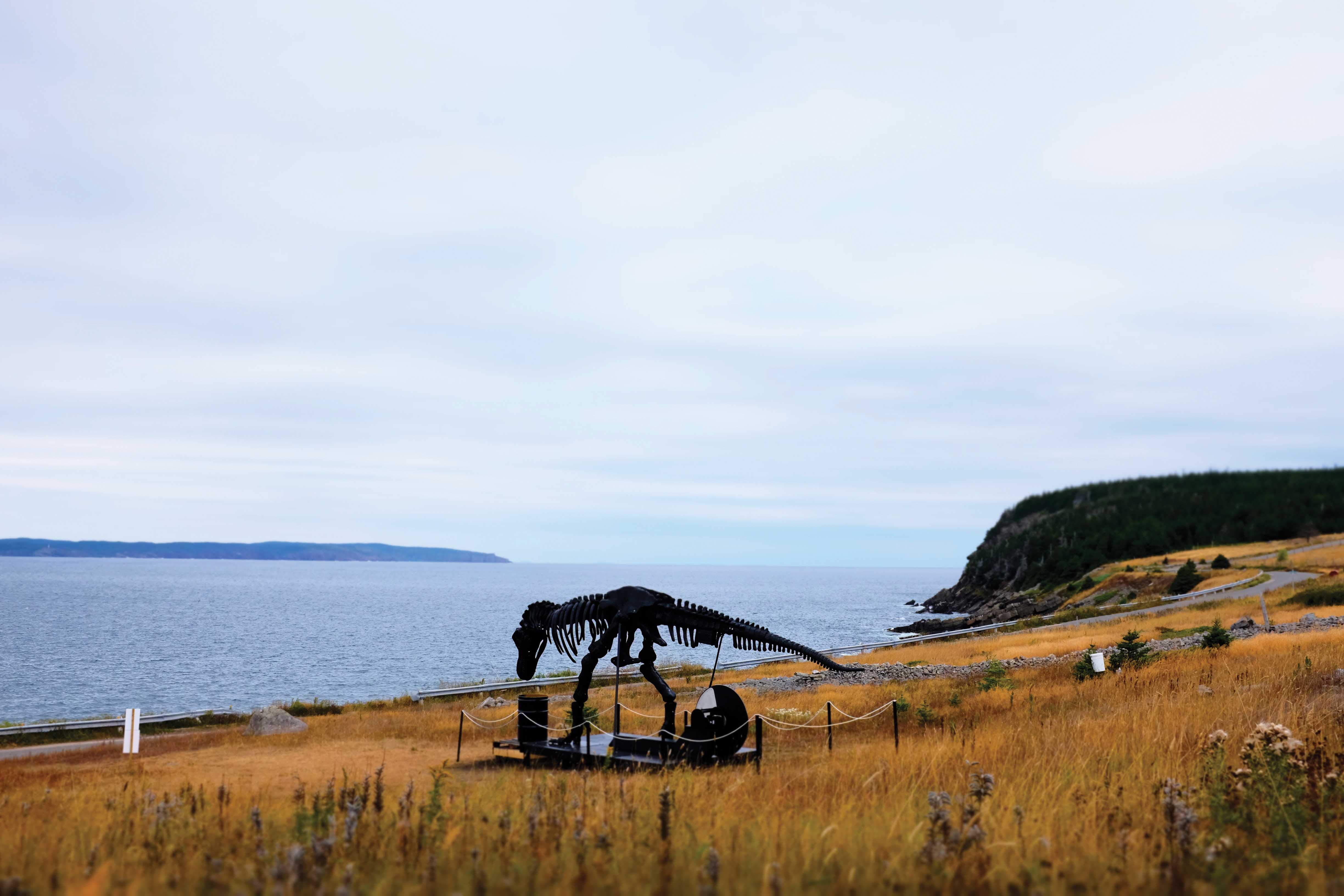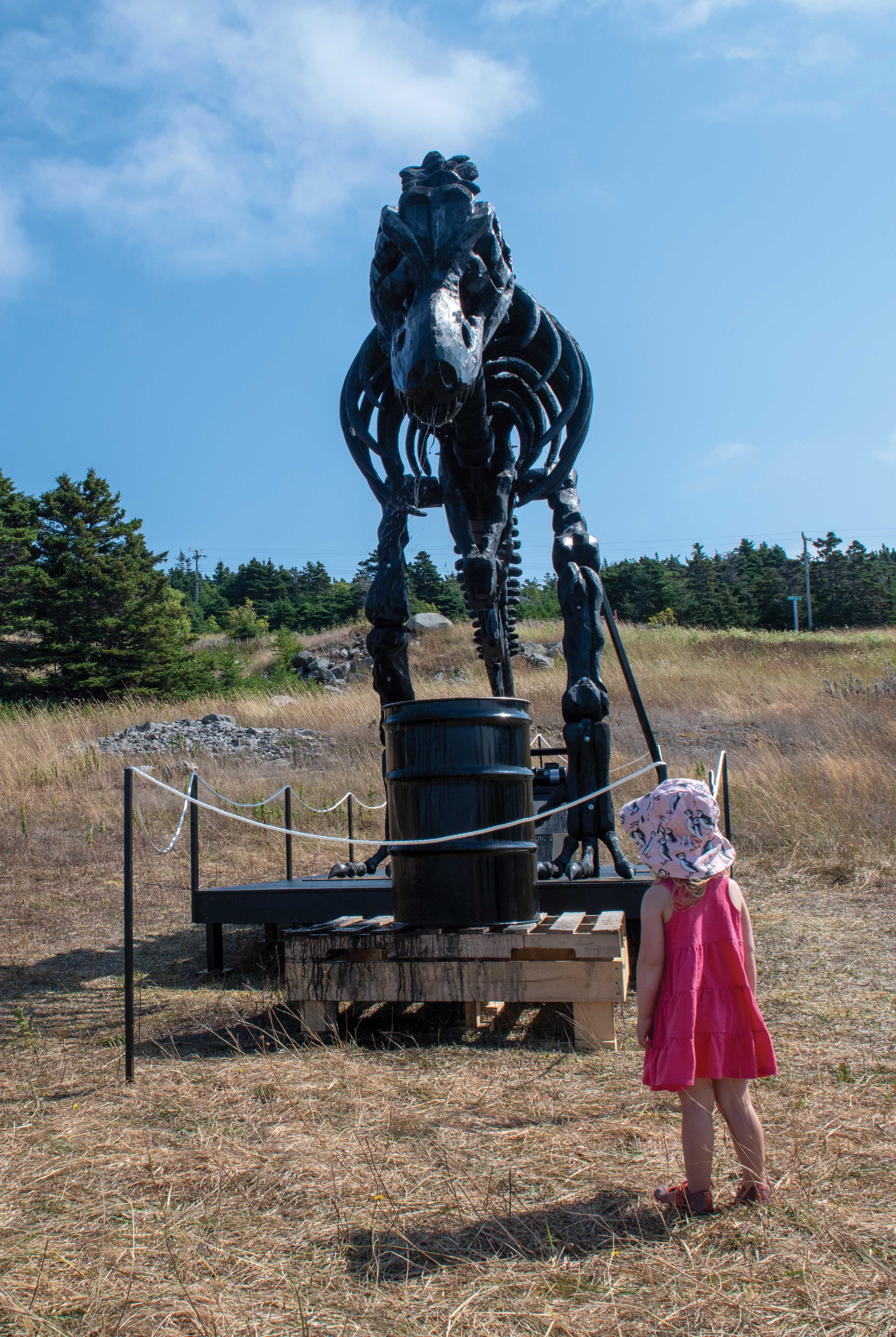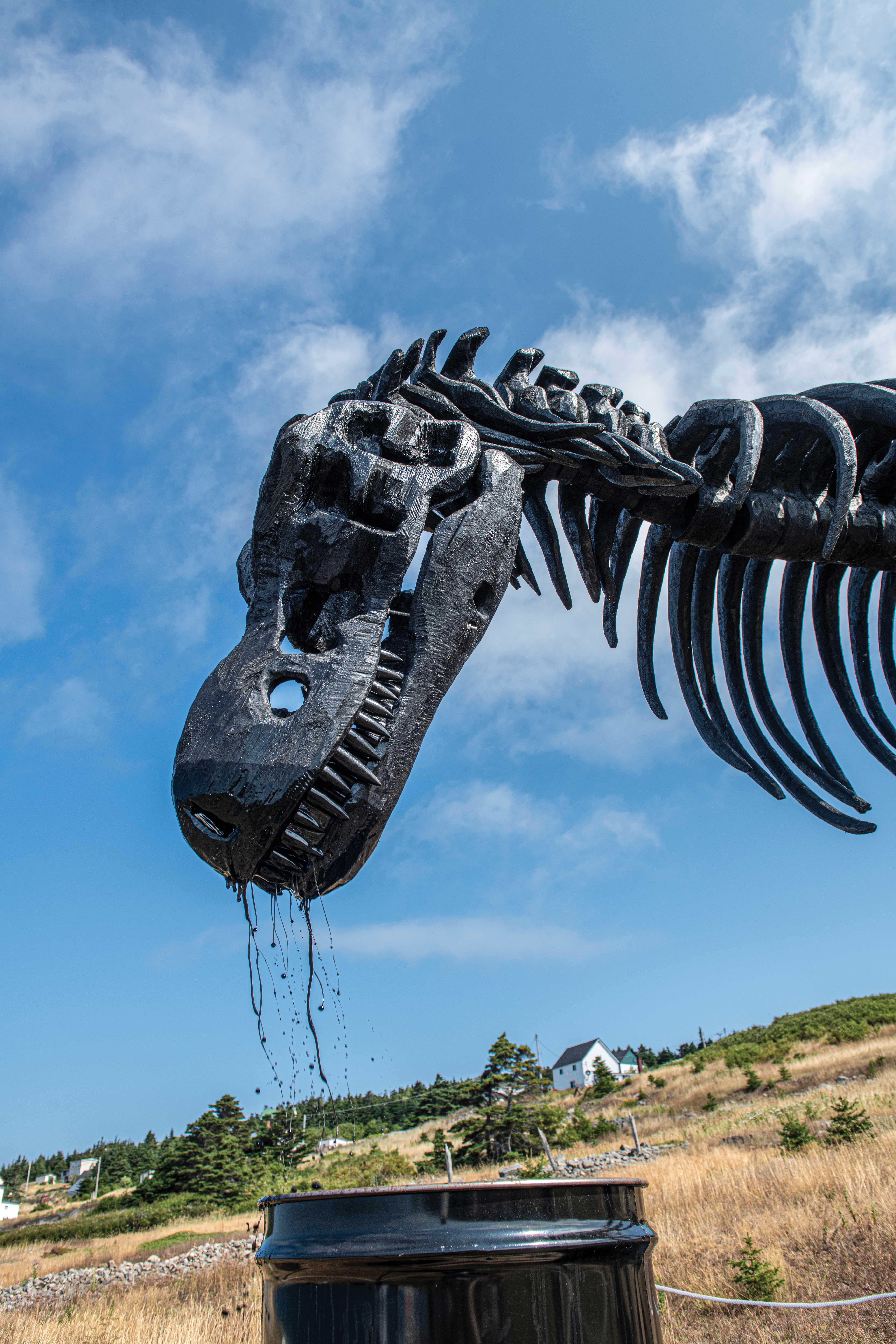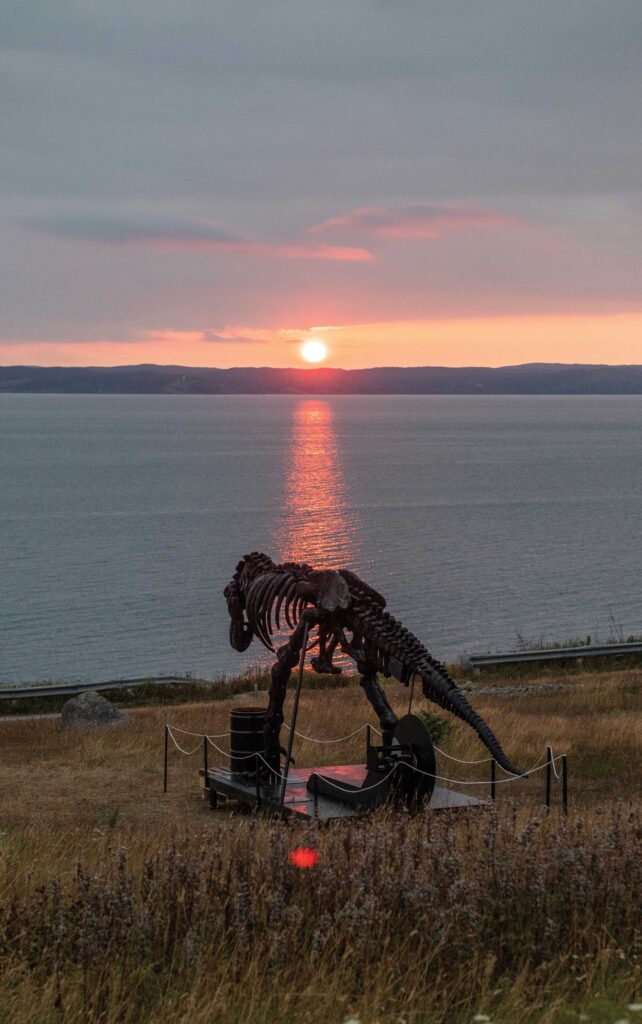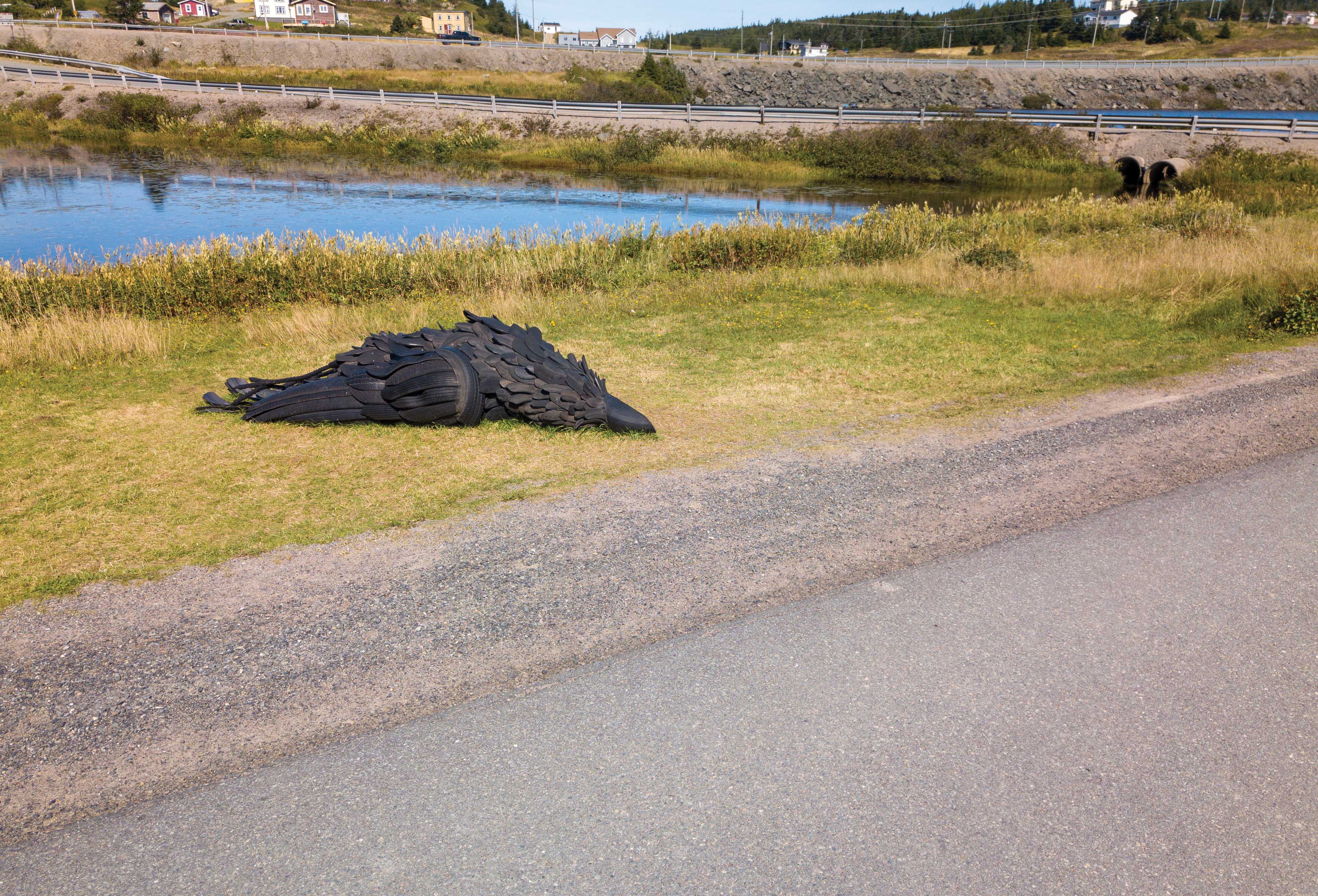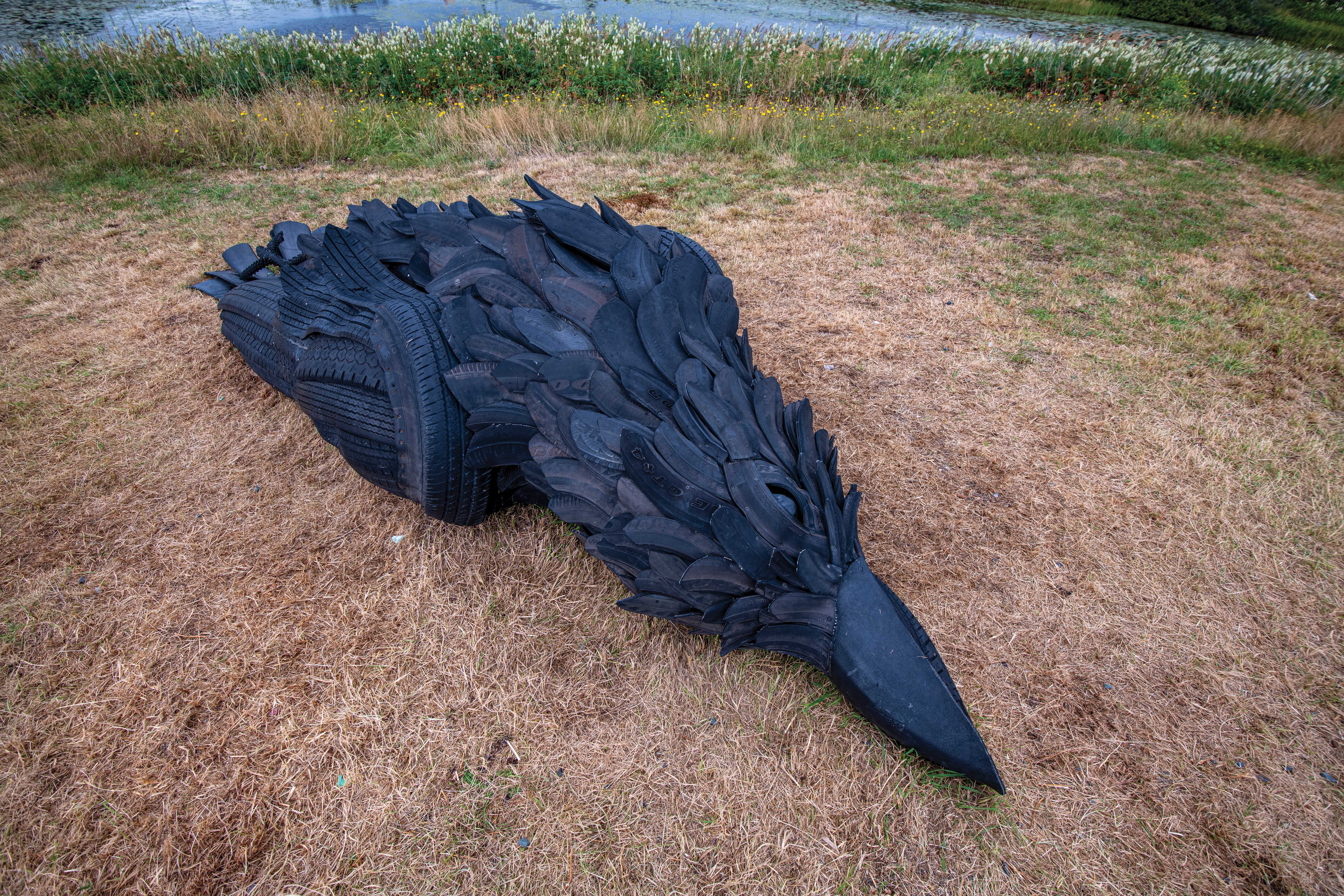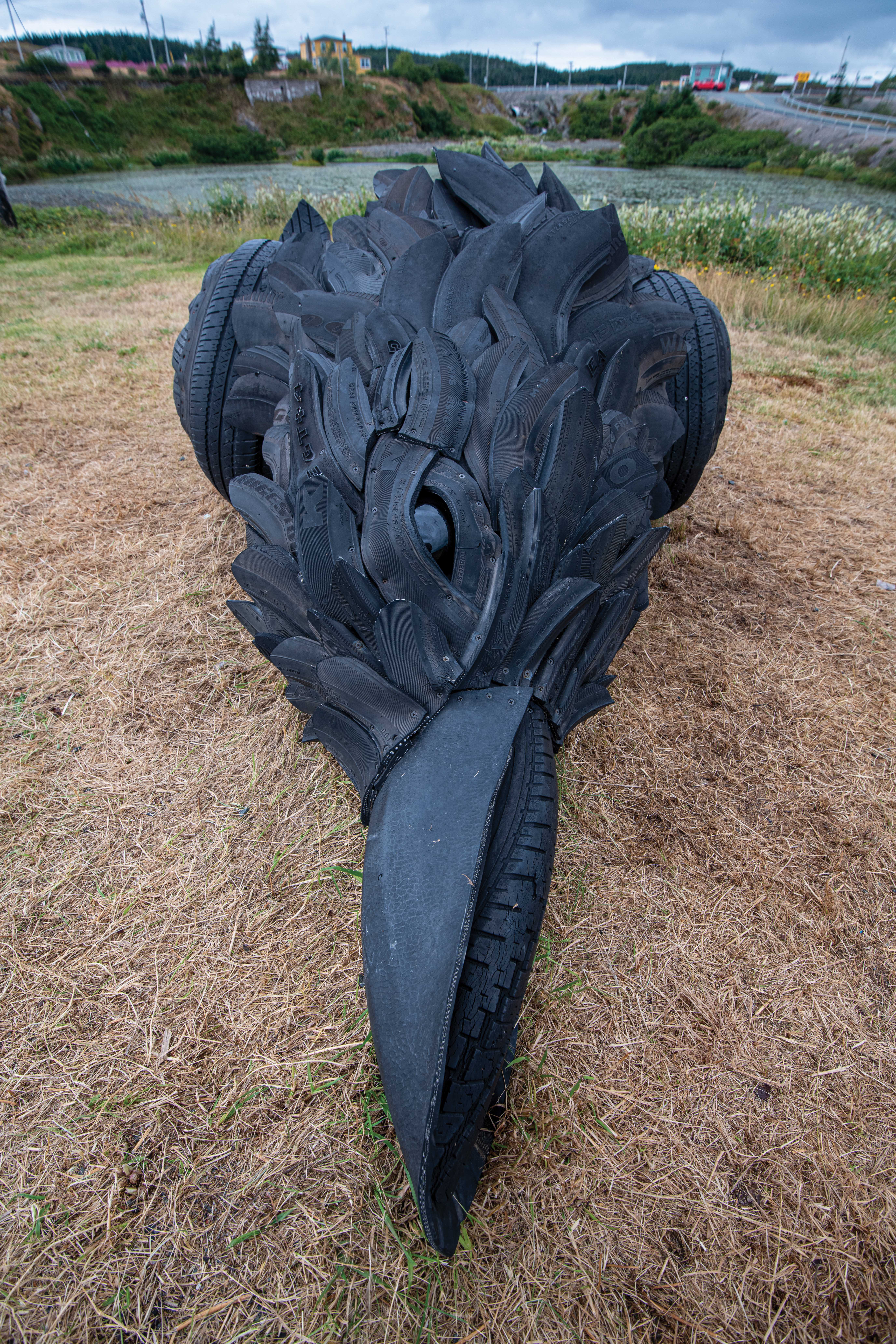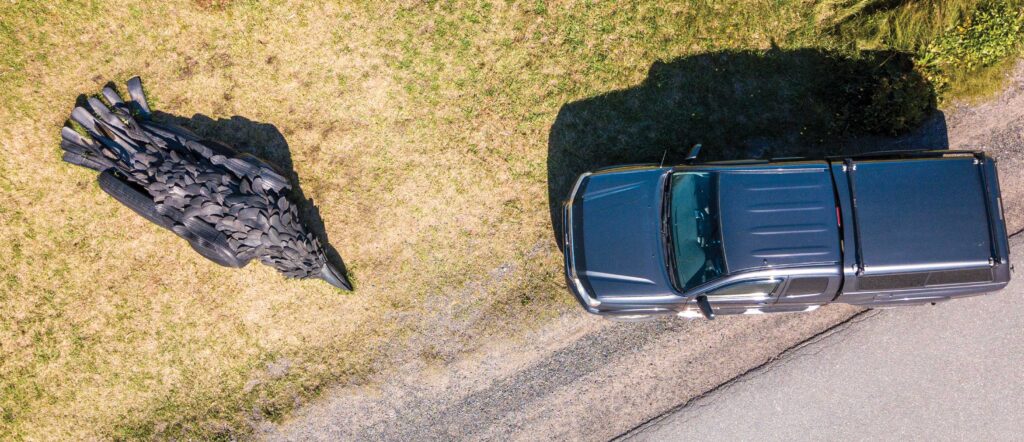Gerald Beaulieu contributes two projects to the 2021 Biennale which, characteristic of his practice, are spectacular in scale and meticulously made. Both of Beaulieu’s projects serve as scathing critiques of the environmental costs of human action.
Inspired by the fossil remains of an Albertosauras, Beaulieu’s kinetic sculpture Extinction is over five metres high and nine metres long. The cyclical rise and fall of the hand-carved skeleton mimics a pumpjack oil well. A reference to both source and tool of extraction, the sculpture is a reminder of the severe environmental damage that humanity’s dependence on fossil fuel, now in terminal decline, has wrought. The social, economic and environmental impacts of oil-and-gas as an energy source and industry have been underscored by the global pandemic occurring during a summer of record-breaking temperatures and cataclysmic weather events.
Fabricated entirely from recycled tires, Beaulieu’s roadkill crow weighs 386 kilos and measures five metres in length. Highly adaptive and intelligent, crows are a sentinel species, indicating environmental risk to humans and providing advance warning. In both material and form, Beaulieu’s work has a sardonic and poetic wit: in When the Rubber Meets the Road, the advance warning is of the deadly consequences of human action; the life-like vacant eyes of the crow a piercing omen of environmental disaster.
For the viewer, the ingenuity and creativity of the artist serve as a buoy against the bleak implications of the work—suggesting a path forward that resonates with the Biennale theme and Beaulieu’s innovation and resourceful use of existing material.
MH

